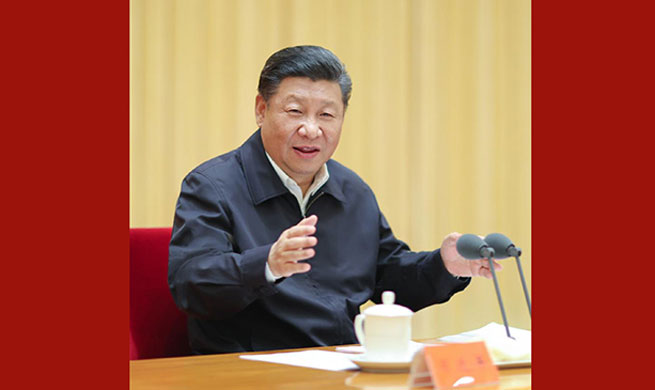WASHINGTON, July 5 (Xinhua) -- American researchers demonstrated in a study published on Thursday in the journal Science the first single-photon transistor using a semiconductor chip.
Roughly 1 million of these new transistors could fit inside a single grain of salt, which is fast and able to process 10 billion photonic qubits every second, according to the study.
Qubits are quantum information carriers used in the quantum computers, which follow rules laid out by quantum physics. Scientists can use many kinds of quantum particles as qubits, even the photons that make up light.
Photons can swiftly shuttle information over long distances, but making a quantum transistor triggered by light has been challenging because it requires that the photons interact with each other, something that doesn't ordinarily happen on its own.
Researchers at the University of Maryland (UMD) led by Edo Waks developed the transistor that can perform quantum gates between photons.
Software running on a quantum computer would use a series of such operations to attain exponential speedup for certain computational problems, according to Waks, professor of computer engineering.
The photonic chip is made from a semiconductor with numerous holes in it, making it appear much like a honeycomb, according to the study.
Light entering the chip bounces around and gets trapped by the hole pattern. A small crystal called a quantum dot sits inside the area where the light intensity is strongest.
The dot can store information about photons as they enter the device and effectively tap into that memory to mediate photon interactions, meaning that the actions of one photon affect others that later arrive at the chip.
"In a single-photon transistor the quantum dot memory must persist long enough to interact with each photonic qubit," said Sun Shuo, the paper's lead author and postdoctoral research fellow at Stanford University who was a UMD grad student at the time of the research.
The researchers examined how the device responded to weak light pulses that usually contained only one photon.
In a normal environment, such dim light might barely register. However, in this device, a single photon gets trapped for a long time, registering its presence in the nearby dot.
"This allows a single photon to switch a bigger stream of photons, which is essential for our device to be considered a transistor," said Sun.
The team observed that a single photon could, by interacting with the dot, control the transmission of a second light pulse through the device.
The first light pulse acts like a key, opening the door for the second photon to enter the chip. If the first pulse didn't contain any photons, the dot blocked subsequent photons from getting through.
This behavior is similar to a conventional transistor where a small voltage controls the passage of current through its terminals.
The researchers successfully replaced the voltage with a single photon and demonstrated that their quantum transistor could switch a light pulse containing around 30 photons before the quantum dot's memory ran out.
Sun said that with realistic engineering improvements their approach could allow many quantum light transistors to be linked together.
The team hoped that such speedy, highly connected devices would eventually lead to compact quantum computers that process large numbers of photonic qubits.

















